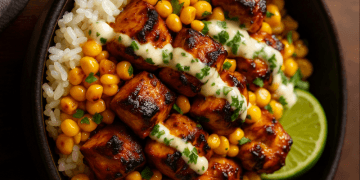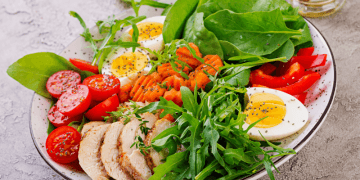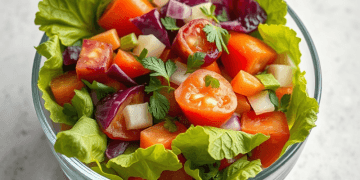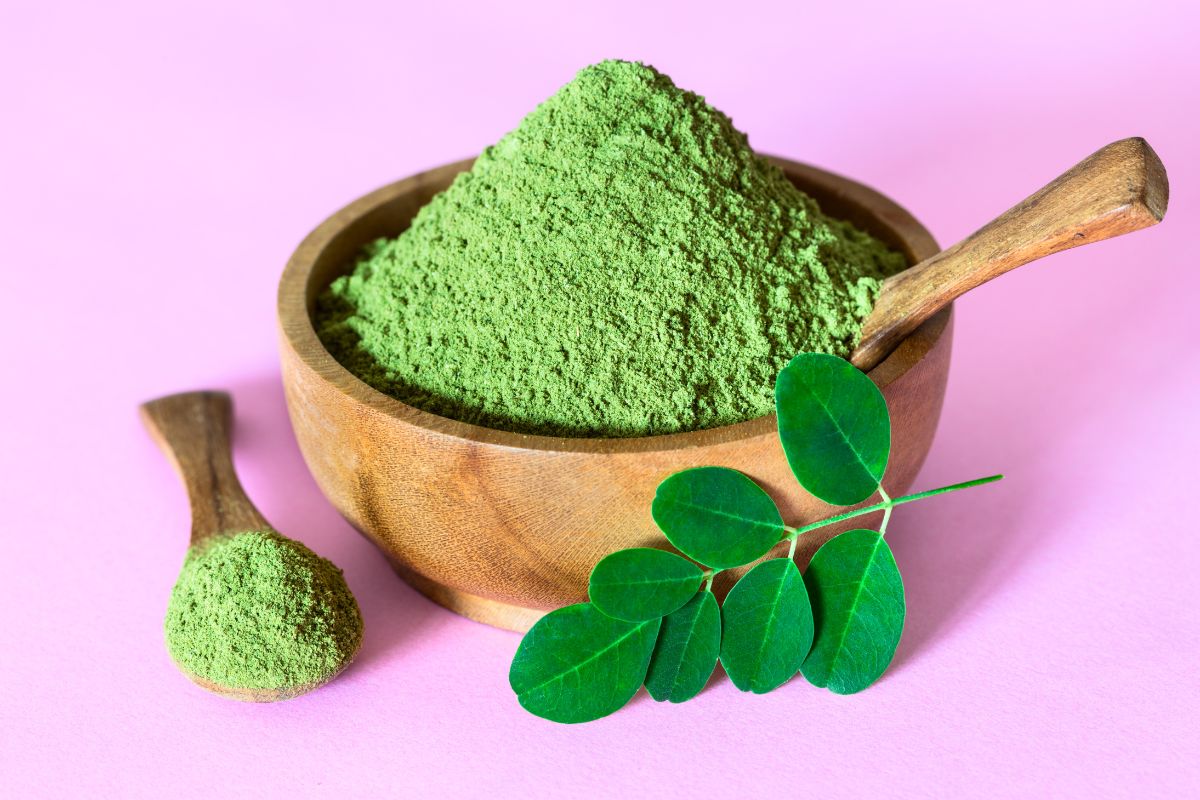Last Updated on July 1, 2025 by Lauretta Iyamu, PharmD
Inflammation is your body's natural defense. But when it sticks around too long, it can cause problems. This is called chronic inflammation, and it's linked to many health issues.
The food you eat can either help fight this inflammation or make it worse. Choosing the right foods is a powerful way to support your body. This guide gives you a clear and simple anti inflammatory foods list.
We will show you which foods work best and why they work. You will learn easy ways to add them to your meals. This is your roadmap to using food to feel better from the inside out.
1. Fatty Fish (Salmon, Mackerel, Sardines)
Fatty fish are at the top of any anti inflammatory foods list. They are full of special fats called omega-3s, specifically EPA and DHA. Your body uses these fats to create substances that calm down inflammation.
How Fatty Fish Combat Inflammation
The EPA and DHA in fatty fish directly lower the amount of inflammatory stuff your body makes. Studies show that people with arthritis feel less joint pain when they eat fatty fish regularly. If you want to feel your best, adding these fish to your diet is a great strategy. For supplements, you can look into the best omega-3 supplements for ADHD.
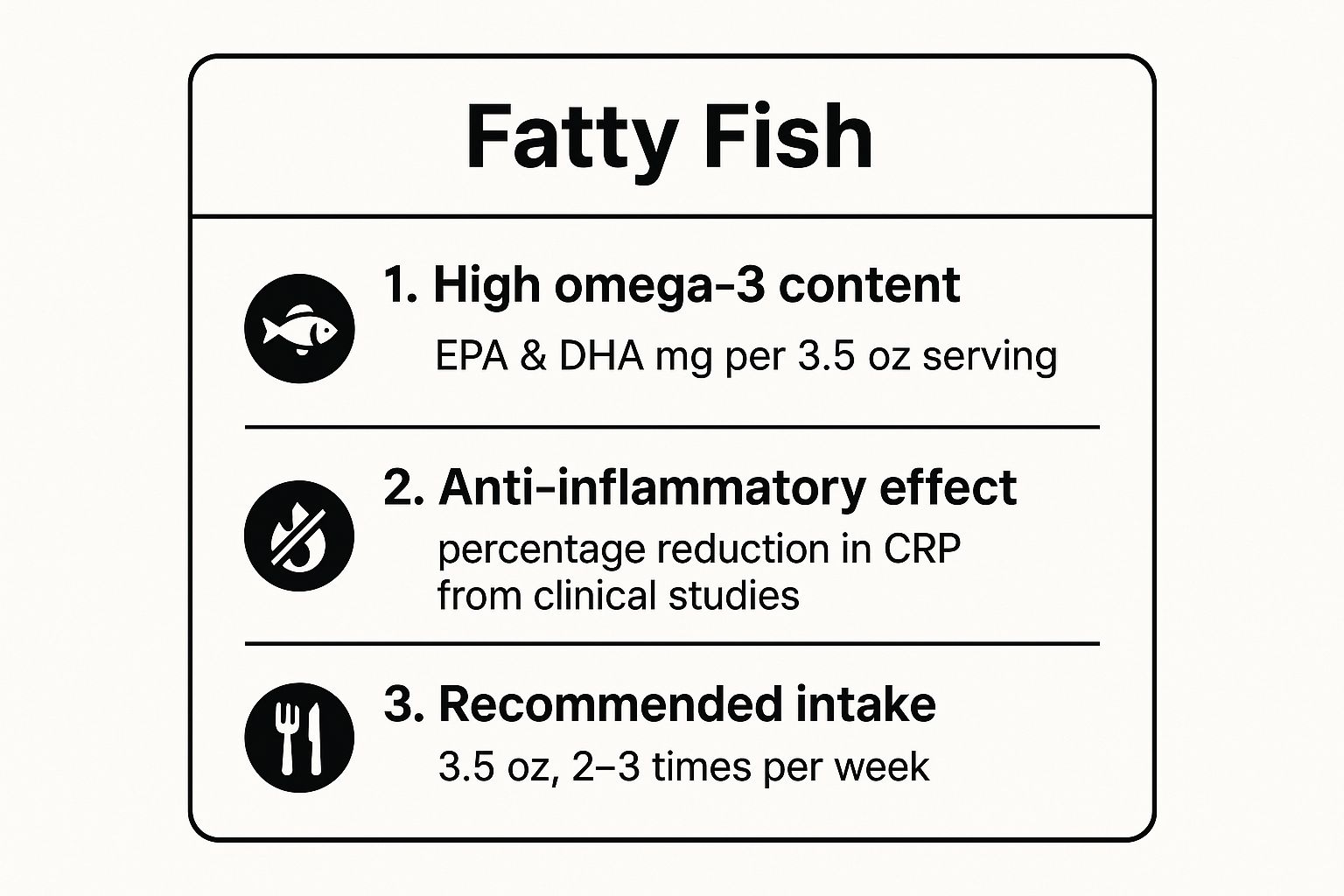
This picture shows you why fatty fish are so good at fighting inflammation. It highlights the omega-3s you get in one serving.
Practical Tips for Adding Fish to Your Diet
Adding fatty fish to your meals is easy. Try to eat two or three servings each week.
- Cook it right: Bake, grill, or steam your fish instead of frying it.
- Choose wisely: Wild-caught fish often has more healthy fats.
- Keep it simple: Canned salmon or sardines are quick, cheap, and very healthy.
2. Leafy Green Vegetables (Spinach, Kale, Swiss Chard)
Dark leafy greens are essential for an anti inflammatory foods list. They are loaded with vitamins and antioxidants that fight inflammation. These greens are rich in vitamin K and other helpers that protect your body.
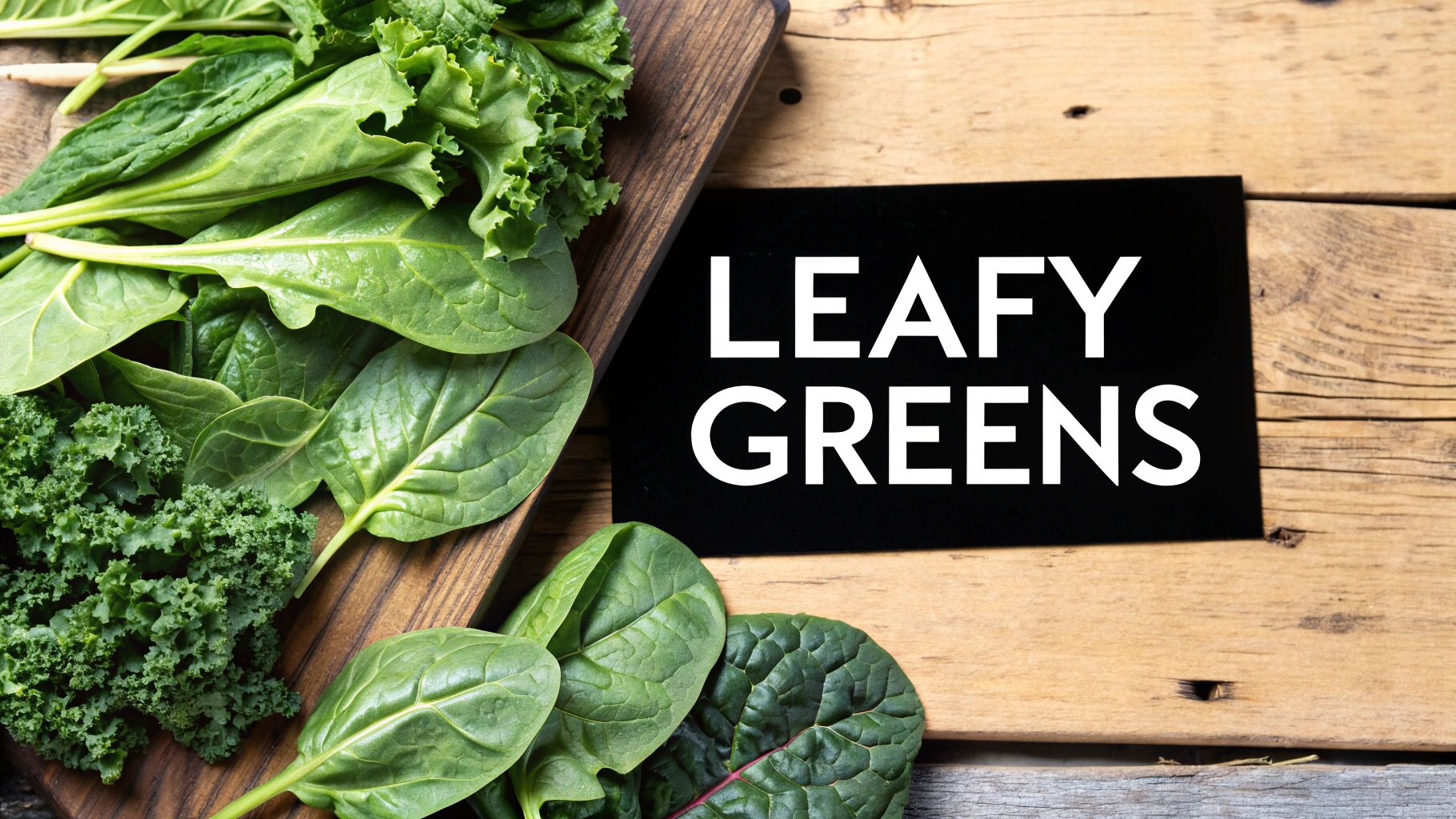
How Leafy Greens Combat Inflammation
The good stuff in leafy greens helps stop your body from making inflammatory signals. People who eat more greens have lower levels of inflammation markers. This makes leafy greens a simple and powerful choice.
Practical Tips for Adding Leafy Greens to Your Diet
It's easy to eat more leafy greens every day. Aim for one or two cups daily.
- Blend them: Toss a handful of spinach into your morning smoothie.
- Cook them simply: Sauté greens with a little garlic and olive oil.
- Buy them ready: Pre-washed greens save a lot of time.
3. Berries (Blueberries, Strawberries, Cherries)
Berries are a colorful and tasty part of any anti inflammatory foods list. They are full of antioxidants called anthocyanins. These are the things that give berries their bright red and blue colors.

How Berries Combat Inflammation
The anthocyanins in berries help stop inflammation in its tracks. For example, tart cherry juice can reduce muscle soreness for athletes. Eating berries is a simple way to protect your body and brain.
Practical Tips for Adding Berries to Your Diet
Making berries a regular snack is easy. Try to eat about one cup a few times a week.
- Use frozen: Frozen berries are picked when they are perfectly ripe and are just as healthy.
- Go organic: Berries like strawberries can have pesticides, so organic is a good choice if you can.
- Add them everywhere: Put berries on your oatmeal, yogurt, or in smoothies.
4. Turmeric
Turmeric is a bright yellow spice that is a hero on our anti inflammatory foods list. It contains a powerful substance called curcumin. Curcumin is one of the best natural inflammation fighters you can find.
How Turmeric Combats Inflammation
Curcumin works by blocking a molecule that turns on inflammation in your cells. By stopping this molecule, it calms your body's inflammatory response. It works so well that studies show it can help people with arthritis feel much better.
Practical Tips for Adding Turmeric to Your Diet
Your body needs help to absorb curcumin. Here are some tips.
- Add pepper: A little black pepper helps your body absorb curcumin much better.
- Use healthy fat: Eat turmeric with foods like avocado or olive oil.
- Get creative: Add turmeric to soups, smoothies, or make a warm "golden milk" drink.
5. Extra Virgin Olive Oil
Extra virgin olive oil is a key part of any healthy anti inflammatory foods list. It is full of healthy fats and a special antioxidant called oleocanthal. This antioxidant works a lot like ibuprofen to fight inflammation.
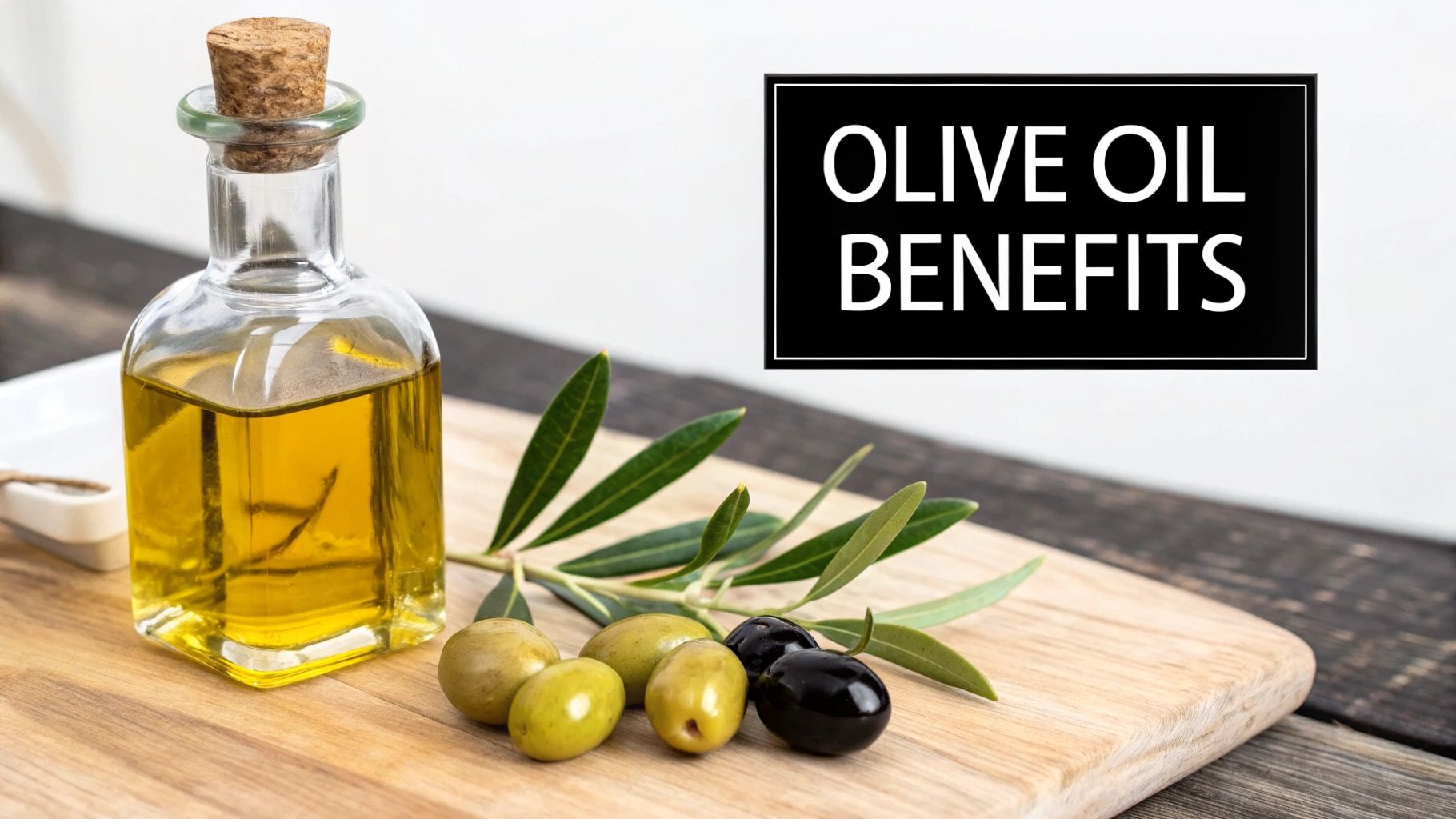
How Extra Virgin Olive Oil Combats Inflammation
The unique mix of healthy fat and antioxidants in this oil helps lower inflammation markers. This is why people who use a lot of olive oil often have healthier hearts. It is a simple staple for good health.
Practical Tips for Adding Olive Oil to Your Diet
To get the best benefits, quality is key. Use it as a finishing touch.
- Buy the good stuff: Look for "extra virgin" olive oil in a dark bottle.
- Don't overheat: Drizzle it on salads, soups, or roasted veggies after they are cooked.
- Store it right: Keep your oil in a cool, dark place away from the stove.
6. Nuts and Seeds (Walnuts, Flaxseeds, Chia Seeds)
Nuts and seeds are small but mighty additions to your anti inflammatory foods list. They are great plant-based sources of omega-3 fats and other protective nutrients. Walnuts, flaxseeds, and chia seeds are especially good choices.
How Nuts and Seeds Combat Inflammation
The healthy fats and antioxidants in nuts and seeds protect your cells from stress. The fiber in flax and chia seeds also helps control inflammation in your gut. Eating a handful of nuts is a simple way to support your heart and brain.
Practical Tips for Adding Nuts and Seeds to Your Diet
It's easy to add these to your day. A small handful is all you need.
- Grind your flax: Your body can't use whole flaxseeds, so grind them first.
- Soak your chia: Mix chia seeds with water or milk to make a healthy pudding.
- Keep them raw: Choose raw, unsalted nuts to avoid extra sodium and oils.
7. Ginger
Ginger is a zesty root that belongs on every anti inflammatory foods list. It has been used for centuries to help with health problems. Its main active parts, gingerol and shogaol, are strong inflammation fighters.
How Ginger Combats Inflammation
The gingerol in ginger stops your body from making substances that cause inflammation. This makes it a great natural choice for pain relief. Studies show it can help with sore muscles and arthritis pain.
Practical Tps for Adding Ginger to Your Diet
Adding this powerful root to your food is simple. It adds a nice, spicy flavor.
- Use it fresh: Fresh ginger has the most health benefits.
- Add it to anything: Grate ginger into stir-fries, smoothies, or make a calming tea.
- Store it well: Keep fresh ginger in the fridge or freezer.
8. Green Tea
Green tea is a top drink for your anti inflammatory foods list. It is full of powerful antioxidants called catechins. The most important one is EGCG, which directly reduces inflammation in the body.
How Green Tea Combats Inflammation
The EGCG in green tea stops the body from making molecules that fuel inflammation. Drinking green tea is linked to a lower risk of heart disease and other problems. It is also great for exploring teas that aid weight management.
Practical Tips for Adding Green Tea to Your Diet
Drinking a few cups of green tea each day is a simple way to fight inflammation.
- Brew it right: Don't use boiling water, as it can make the tea bitter.
- Drink between meals: This helps your body absorb all its goodness.
- Choose quality: Loose-leaf tea or matcha often has more benefits.
9. Avocados
Avocados are a creamy and delicious part of any anti inflammatory foods list. They are filled with healthy monounsaturated fats that are known to reduce inflammation. They also have fiber and other antioxidants that protect your cells.
How Avocados Combat Inflammation
The main healthy fat in avocados helps lower inflammation markers in your body. Avocados also help you absorb more nutrients from other foods. Adding avocado to a salad helps your body soak up more of the good stuff from the vegetables.
Practical Tips for Adding Avocados to Your Diet
Adding this fruit to your meals is simple. It makes everything better.
- Pick a good one: Choose an avocado that is slightly soft when you press it gently.
- Stop the brown: Squeeze a little lemon or lime juice on a cut avocado to keep it green.
- Use it everywhere: Add it to toast, blend it in smoothies, or mash it for guacamole.
10. Sweet Potatoes
Sweet potatoes are a colorful and healthy choice for your anti inflammatory foods list. They are packed with beta-carotene, an antioxidant your body turns into vitamin A. They provide energy without causing the inflammation linked to sugar.
How Sweet Potatoes Combat Inflammation
The antioxidants in sweet potatoes fight off damage that can cause inflammation. The fiber also helps keep your gut healthy. A healthy gut is very important for controlling your body's inflammation.
Practical Tips for Adding Sweet Potatoes to Your Diet
Sweet potatoes are versatile and easy to cook. They work in both sweet and savory dishes.
- Cook them gently: Baking or steaming is the best way to keep their nutrients.
- Eat the skin: The skin has a lot of extra fiber and nutrients.
- Add a healthy fat: Eat sweet potatoes with olive oil or avocado to help your body absorb the beta-carotene.
Your Guide to Anti-Inflammatory Foods
| Food Item | How to Add It | What You Need | What It Does | Best For | Main Benefit |
|---|---|---|---|---|---|
| Fatty Fish | Cook it for meals | Fresh or canned fish | Lowers inflammation, helps joints | Heart health, arthritis relief | High in EPA/DHA omega-3s |
| Leafy Greens | Add to any meal | Fresh or frozen | Reduces inflammation markers | Daily health, protecting cells | Packed with antioxidants |
| Berries | Eat as a snack | Fresh or frozen | Fights cell damage, helps brain | Brain health, post-workout recovery | High in powerful anthocyanins |
| Turmeric | Add as a spice | Powder or fresh root | Strongly fights inflammation | Chronic pain, arthritis support | Contains active curcumin |
| Extra Virgin Olive Oil | Drizzle on food | Quality oil | Lowers inflammation, helps heart | Salad dressings, finishing dishes | Rich in healthy fats and oleocanthal |
| Nuts and Seeds | Eat as a snack | Raw, unsalted | Lowers inflammation, helps brain | Healthy snacks, plant-based omega-3s | Good source of ALA omega-3 and fiber |
| Ginger | Use in cooking or tea | Fresh root or powder | Reduces pain and nausea | Digestion, muscle pain relief | Contains helpful gingerols |
| Green Tea | Drink it daily | Tea bags or leaves | Lowers cell damage and inflammation | Daily antioxidant boost, weight support | High in protective EGCG |
| Avocados | Add to meals | Ripe avocados | Reduces inflammation, helps heart | Healthy fat source, boosts nutrients | Full of monounsaturated fat |
| Sweet Potatoes | Cook as a side | Fresh sweet potatoes | Supports immune system, gives energy | Healthy carbs, immune support | High in beta-carotene |
Conclusion
You've just learned about the best foods to fight inflammation. This anti inflammatory foods list is a powerful tool for your health. You now know that simple foods like fish, berries, and spices can make a big difference.
The next step is to start using this knowledge. You don't have to change everything at once. Start by making small, easy changes to your daily meals.
Try adding spinach to your eggs or snacking on walnuts instead of chips. These small steps add up over time. Every healthy choice you make is a step toward feeling better.
This is not about a perfect diet. It is about making progress and feeling more vibrant.
What is the first food from this list you are excited to add to your meals?
Ready to learn more about how food can transform your health? At Healthy Avid, we offer clear, expert-backed advice to help you on your wellness journey. Visit us to find more helpful guides and resources at Healthy Avid.









